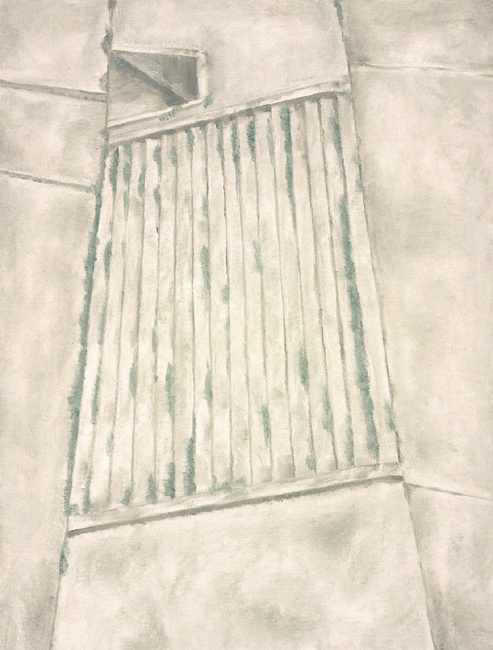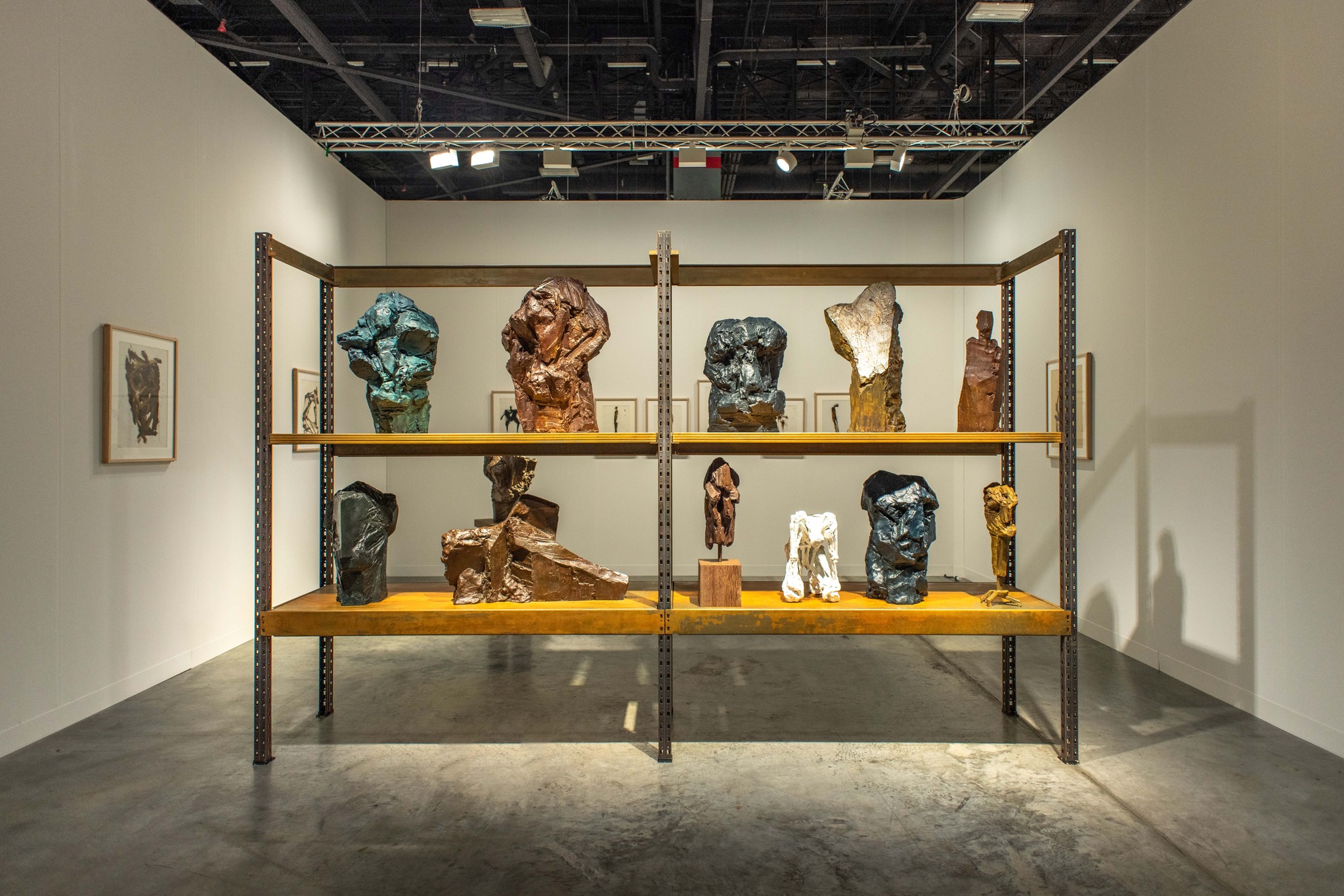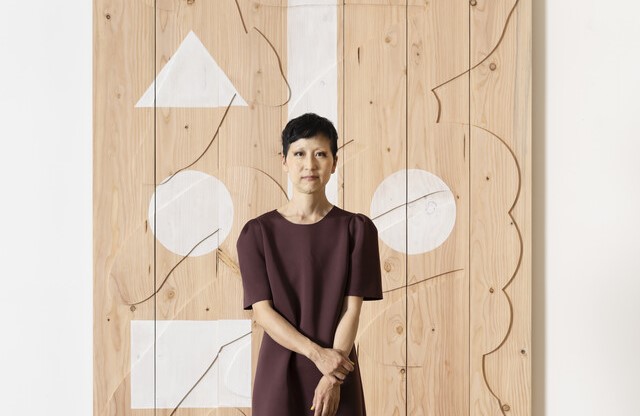Roh Choong-hyun (b. 1970) captures and
engages with familiar scenes from our everyday lives, translating them onto
canvas through his unique painterly language. He begins by photographing
landscapes he observes directly from where he stands, then reinterprets these
images through the medium of painting.
His paintings, while portraying landscapes
with a subdued and unassuming tone, often stir fragments of our memories or
evoke a profound emotional resonance.

Roh Choong Hyun, Island, 2005 ©Roh Choong Hyun
When Roh began his artistic journey, Korean
painting was dominated by two major movements: the abstract “Dansaekhwa” and
socially conscious “Minjung Art”. Amid this landscape, Roh emerged as a
new-generation figurative artist, approaching reality with a perspective
distinct from that of the previous generation.
In the early 2000s, during the era when
digital cameras became widely accessible, Roh started building his unique
painterly world using photography as a key element. His work begins with
carrying a digital camera to revisit and reevaluate the places he frequents.
The photographs he captures serve as tools to evoke the memories and emotions
he experienced while observing those landscapes, which he then reconstructs on
canvas.

Roh Choong Hyun, Stairs, 2006 ©Roh Choong Hyun
Since
2005, Roh Choong Hyun has been working on his Prosaic Landscape
series, set against the backdrop of Han River Civic Park, a place he frequented
for many years. The title, Prosaic Landscape (살풍경),
carries the dictionary definition of “a highly solitary and quiet landscape.”
Unlike the structured, dense, and rigid cityscapes, Han River Park stands out
as a rare open, quiet, and unoccupied space within the bustling metropolis.
At
the time, the artist was experiencing a sense of psychological alienation,
which drew his attention to the barren and monotonous landscapes within this
desolate setting. While his paintings are grounded in emotional experiences of
the scenery, they are rendered with a subdued and detached attitude,
maintaining a restrained emotional distance.

Roh Choong Hyun, The Rainy Season, 2008 ©Roh Choong Hyun
The artificial and
natural landscapes of Han River Park undergo painterly reinterpretation in Roh’s
work, transforming them into places that feel both familiar and strange. For
instance, The Rainy Season (2008), which depicts a rainy
Yeouido swimming pool in Han River Park, conveys impressions of barrenness and
desolation beyond the visible scene.

Roh Choong Hyun, A Night in the Reservoir, 2013 ©Roh Choong Hyun
The
artist explained that unlike a photograph, this work captures the location with
“imprecise perspective, applying paint as thinly as possible to evoke the
impression of murky, muddy water.” Through the blurred textures in the
painting, viewers can sense the emotional and visual responses the artist
experienced at the site. Additionally, his paintings invite the viewers to
reflect on the spatial atmosphere of each scene, intertwined with the passage
of time inherent to the depicted location.
Around
2011, Roh began observing the seasonal changes along the Han River. Revisiting
the same spots he had observed for nearly a decade, he saw these landscapes
anew, seeking to reimagine them and evoke the emotions tied to their
transformation.

Roh Choong Hyun, Horn, 2006 ©Roh Choong Hyun
While
the Prosaic Landscape series captures the
"in-between" spaces of the city, the Zari series,
which Roh began in 2006, shifts its focus to the landscapes of zoos—spaces that
exist "outside" the urban fabric. By painting empty animal enclosures
devoid of their usual inhabitants, the artist portrays spaces with ambiguous
identities—vacant "places" where traces of modernity seem to linger.

Roh Choong Hyun, Circus, 2006 ©Roh Choong Hyun
By
removing the animals, the protagonists of the zoo stage, Roh shifts focus to
the space itself, drawing attention to the stage-like setting. These
enclosures, designed for the animals to play in, are often adorned with
makeshift elements such as clumsy wooden pillars and artificial natural
objects, creating a contrived and awkward landscape. The artificiality and
irony of these scenes, as observed by Roh, are depicted in his paintings as
sealed, vacuum-like spaces, devoid of any airflow or movement, further
intensifying their eerie stillness.

Roh Choong Hyun, Waiting for Godot, 2006 ©Roh Choong Hyun
The
artist sees the stage elements of the zoo as mirroring the precarious and
fragile structures of the world we live in. He described this space as “a
landscape similar to the stage of Samuel Beckett’s Waiting for Godot,
where fragments of human reality are displayed—a space that mixes the tragedy
and comedy of human life, a paradoxical space that evokes an appropriate sense
of melancholy.”
Objects
in the zoo, such as hula hoops, tires, and water bottles, placed independently
of the animals, resemble the solitary tree in Waiting for Godot—a
symbol that offers no help to the characters. Through these paradoxical
landscapes, where space and objects are disjointed, the artist invites us to
reflect on our own reality.

Roh Choong Hyun, Room, 2009 ©Roh Choong Hyun
The
Closed-door Room series (2009), presented in a solo
exhibition at Project Space Sarubia, captures the spatial qualities of
historical moments from the military dictatorship era in Korea. This work not
only reflects the artist’s personal reflections on the socio-political history
of modern Korea but also addresses contemporary societal issues.
 Installation view
of “Closed-door Room” (Project Space Sarubia, 2009) ©Project Space Sarubia
Installation view
of “Closed-door Room” (Project Space Sarubia, 2009) ©Project Space SarubiaThe
artist repeatedly engaged in a process of "drawing and erasing" to
record through painting the places associated with the practices of secretive,
authoritarian rule—such as prisons, correctional facilities, Yongsan disaster
site, Memorial of Jong Chul PARK, the old secret service building, and etc.
Additionally,
in the Sarubia exhibition space, the artist experimentally installed two cement
walls at the center, creating a direct encounter between the spatial,
historical, and thematic elements of the painting. This heightened the emphasis
on the theme of ‘secrete rooms-closed door room’ within the work.
Similar
to his earlier series, Closed-door Room is based on
photographs the artist took at the actual locations he visited. However, it
also incorporates images found on the internet, representing situations of
secret room—oppression, discipline, surveillance, death, and violence—, which
were crucial in conveying the hidden, repressive aspects of power.

Roh Choong Hyun, Corridor, 2009 ©Roh Choong Hyun
The
artist addresses the dark realities of history marked by politics, torture,
violence, and death, while reflecting on the social context of the present day.
He believes that societal phenomena such as the impossibility of communication,
closed-off spaces, and unilateralism have transformed into invisible
"secret rooms" that now permeate various aspects of society. Through Closed-door
Room, he uncovers signs that hint at or exemplify these situations
taking place in our society today.
By
capturing these situations and the emotions they evoke through texture, the
artist hints at the broader crisis of a reality that is increasingly becoming
sealed off, extending beyond the political realm to encompass the everyday
struggles of contemporary life.
 Roh Choong Hyun, A
Walk, 2021 ©Chapter II
Roh Choong Hyun, A
Walk, 2021 ©Chapter IIRoh Choong Hyun has consistently translated his emotional experiences and the issues of reality into his own unique visual language. Rather than focusing on distant or extraordinary landscapes, he finds connection in the everyday, ordinary places such as Han River Park, zoos, and Hongjecheon Stream, where he observes and resonates with the human aspects of these environments. His paintings carry a dry and tranquil atmosphere, yet they also convey a warm, humanistic perspective and a sense of warmth toward the landscapes of life.
”What I attempt to express in my paintings is not the place per se, but it is approaching the emotions I have had while staying there. The emotions contain a certain warmth.” (Roh Choong Hyun, Artist Note)

Artist Roh Choong Hyun ©Seoul Art Guide
Roh
Choong Hyun completed his BA and MFA degrees in Painting at Hongik University.
His solo presentation has opened at several recognized galleries such as
Willing N Dealing (2020), Perigee Gallery (2017), Gallery Soso (2015) and Kukje
Gallery (2013). He has also participated in numerous group exhibitions at
multiple leading art establishments including Gallery Soso (2021), National
Museum of Modern and Contemporary Art (2021), Nook Gallery (2020), Buk-Seoul
Museum of Art (2018), Seoul Museum of Art – South Seoul (2018) and Chapter II
(2017). He was selected by the Mongin Art Center Residency Program in 2010.
References
- 노충현, Roh Choong Hyun (Artist Website)
- 국제갤러리, 살풍경 (Kukje Gallery, Prosaic Landscape)
- 국립현대미술관, 노충현 | 장마 | 2008 (National Museum of Modern and Contemporary Art Korea (MMCA), Roh Choong Hyun | The Rainy Season | 2008)
- 페리지갤러리, 자리 (Perigee Gallery, Zari)
- 아트 인 컬처, 이추영: 그 곳의 빈 자리, 2006년 6월호
- 프로젝트 스페이스 사루비아, 실밀실 (Project Space Sarubia, Closed-door Room)
- 챕터투, 노충현 (Chapter II, Roh Choong Hyun)














